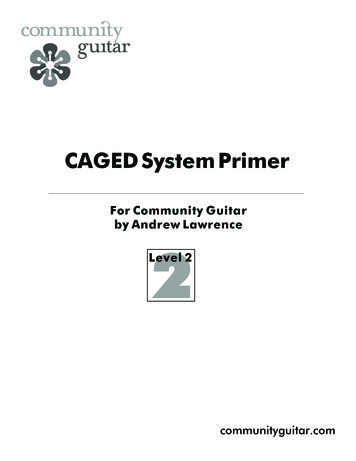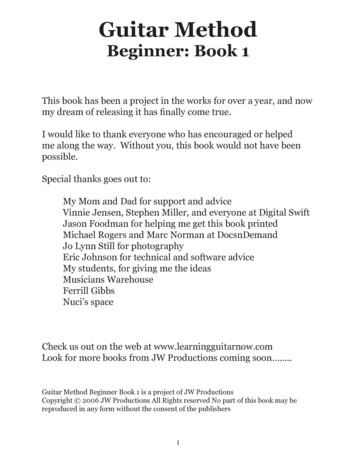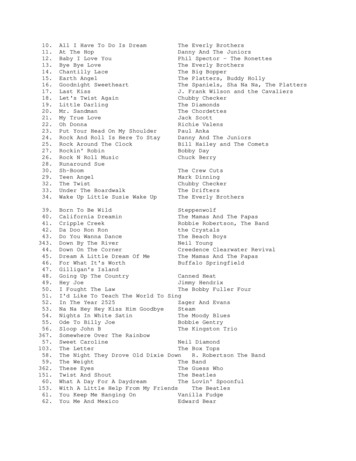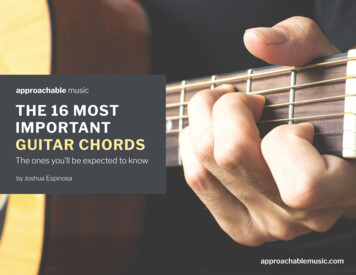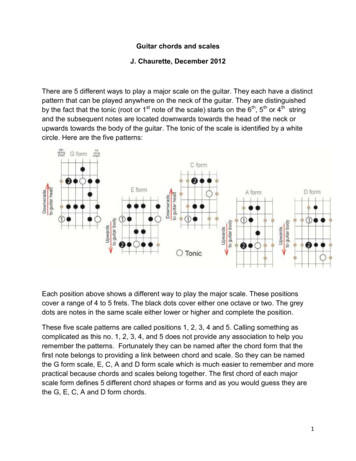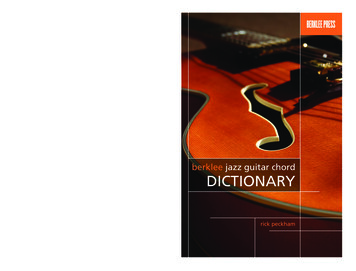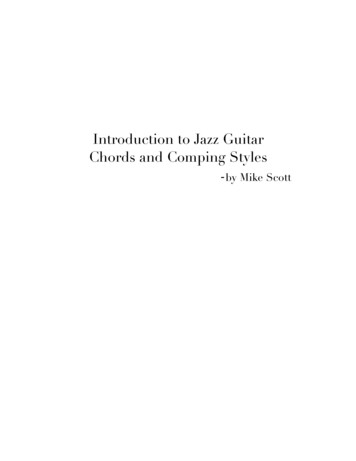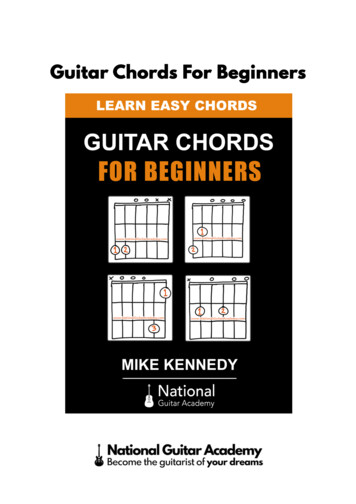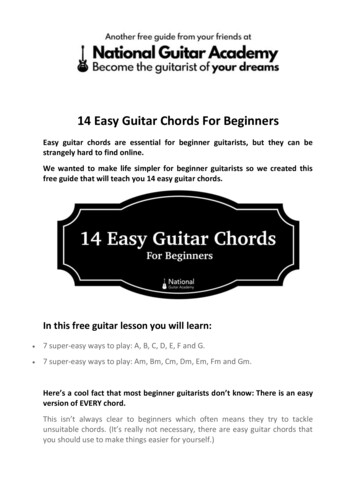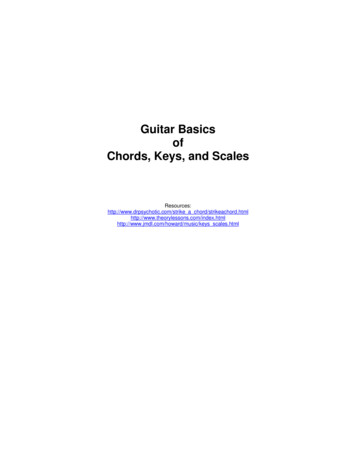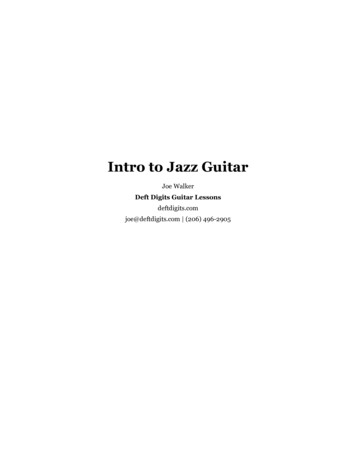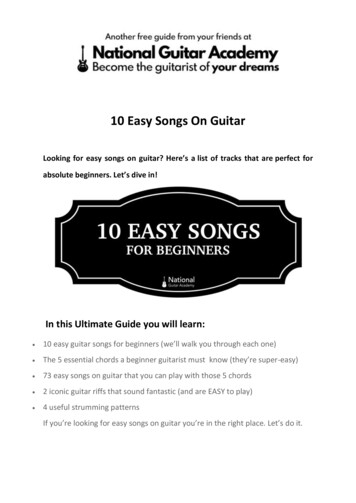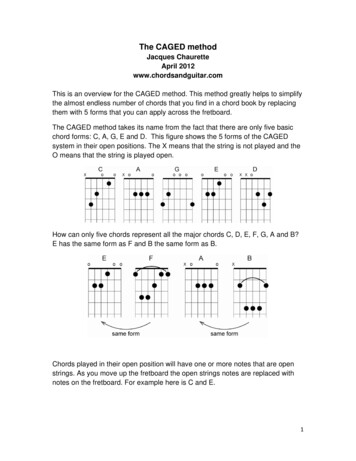
Transcription
The CAGED methodJacques ChauretteApril 2012www.chordsandguitar.comThis is an overview for the CAGED method. This method greatly helps to simplifythe almost endless number of chords that you find in a chord book by replacingthem with 5 forms that you can apply across the fretboard.The CAGED method takes its name from the fact that there are only five basicchord forms: C, A, G, E and D. This figure shows the 5 forms of the CAGEDsystem in their open positions. The X means that the string is not played and theO means that the string is played open.How can only five chords represent all the major chords C, D, E, F, G, A and B?E has the same form as F and B the same form as B.Chords played in their open position will have one or more notes that are openstrings. As you move up the fretboard the open strings notes are replaced withnotes on the fretboard. For example here is C and E.1
If you play the traditional C chord and you play this chord further up the fretboardyou will produce all the major chords within an octave of C. The same can besaid of the A, and then G, and then E, and D forms, they can all be played all theway up the fretboard. Knowing this provides a wonderful simplification to whatappears at first sight to be an endless number of chords that must somehow bememorized at every position on the fret board.Here we see each form as it can be played up the fretboard and the chord namerelated to its position.2
The impact of knowing the CAGED method is profound; I know it has been forme. It simplifies everything and brings a comprehension of the fretboard that isan incredible relief, a release from the tyranny of the chord book.We’ve answered the question of how to play different chords using one form.How can we play the same chord at different positions on the neck using differentforms?When the sequence of forms C, A, G, E and D are all played at the right positionon the fretboard they make the same chord C major.3
How do you explain that the C played on the first 3 frets and the C playedbetween the 3rd and 5th fret are the same chord?They certainly look different. One way to confirm that they are the same is to lookat their notes. The first C played on the first 3 frets has the sequence: C-E-G-C-Estarting from the 5th string. The second C has the sequence: C-G-C-E-G. Whilethe order of notes is not exactly the same, it does start on the same note C andfor our purpose these are identical chords.The other way to see that they are the same is to take the A form and slide itdown towards the body with an additional bar. When you play the A with thenotes of the 2nd, 3rd and 4th strings on the second fret you are playing A in the4
open mode. When you play this chord form further down the neck you first bar allthe notes on the first 5 strings on the 1st fret then skip a fret and use the notes ofthe 2nd, 3rd and 4th strings on the 3rd fret. When you bar the first fret in thisfashion you get Bflat. If you move the pattern one fret up you get B and thenmove it once again one fret up you get C.You can do the same with the other forms such as G and find the position on theneck that corresponds to C and the same for E and D.As you would expect there is a relationship between the CAGED forms and themajor scales, more specifically the different positions from which we can play themajor scales. If you are not familiar with positions you may want to view my othervideo called “Scales and positions”.A position is a sequence of notes following a major scale interval pattern within 4or 5 frets.Since each position will have the range of at least one octave you will be able tofind the lower and upper root of a chord form in the position. Each one of thesepositions can be played anywhere on the neck.Here are all the positions together showing how they interlock on the fretboard.5
The CAGED method not only simplifies chords but also scale positions as theyalso correspond to the basic forms. I hope this helps. Bye.6
This method greatly helps to simplify the almost endless number of chords that you find in a chord book by replacing them with 5 forms that you can apply across the fretboard. The CAGED method takes its name from the fact that there are only five basic chord forms: C, A, G, E and D. This figure shows the 5 forms of the CAGED system in their open positions. The X means that the string is not .
